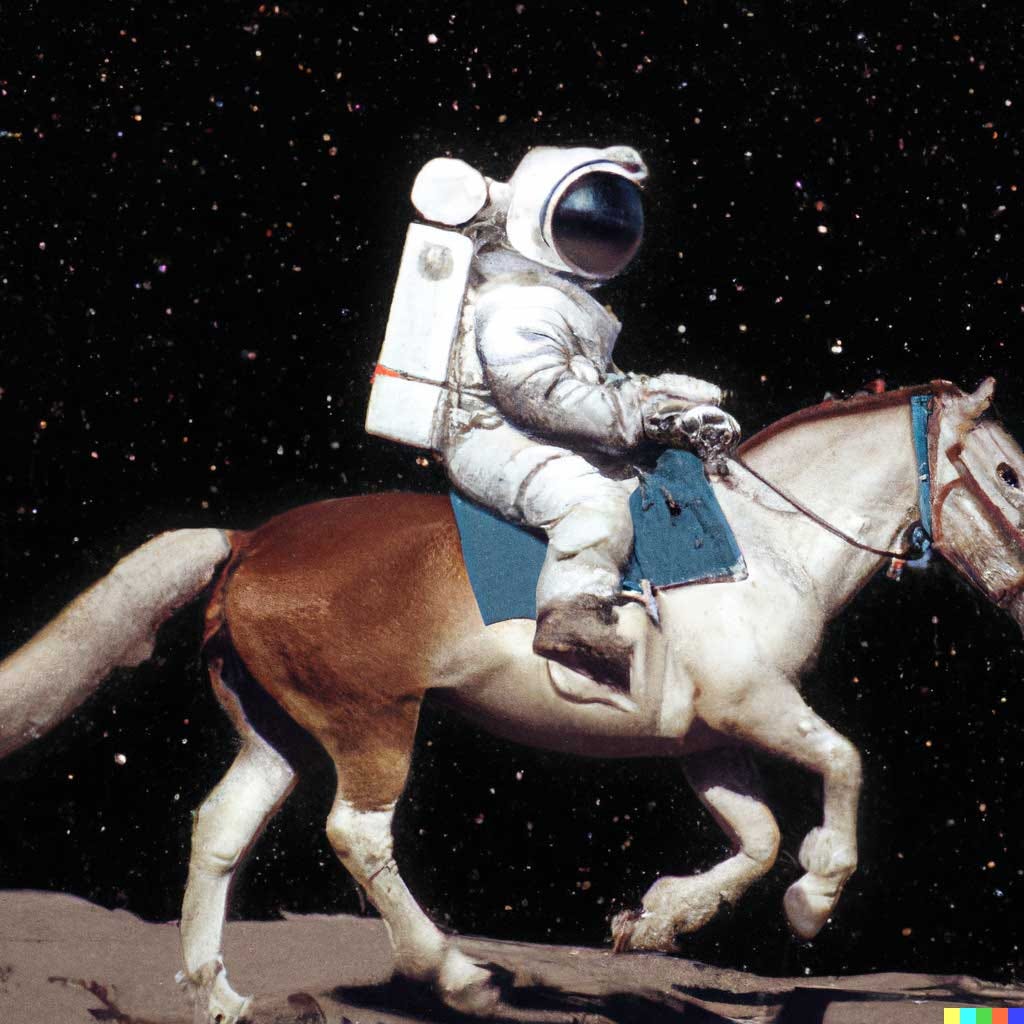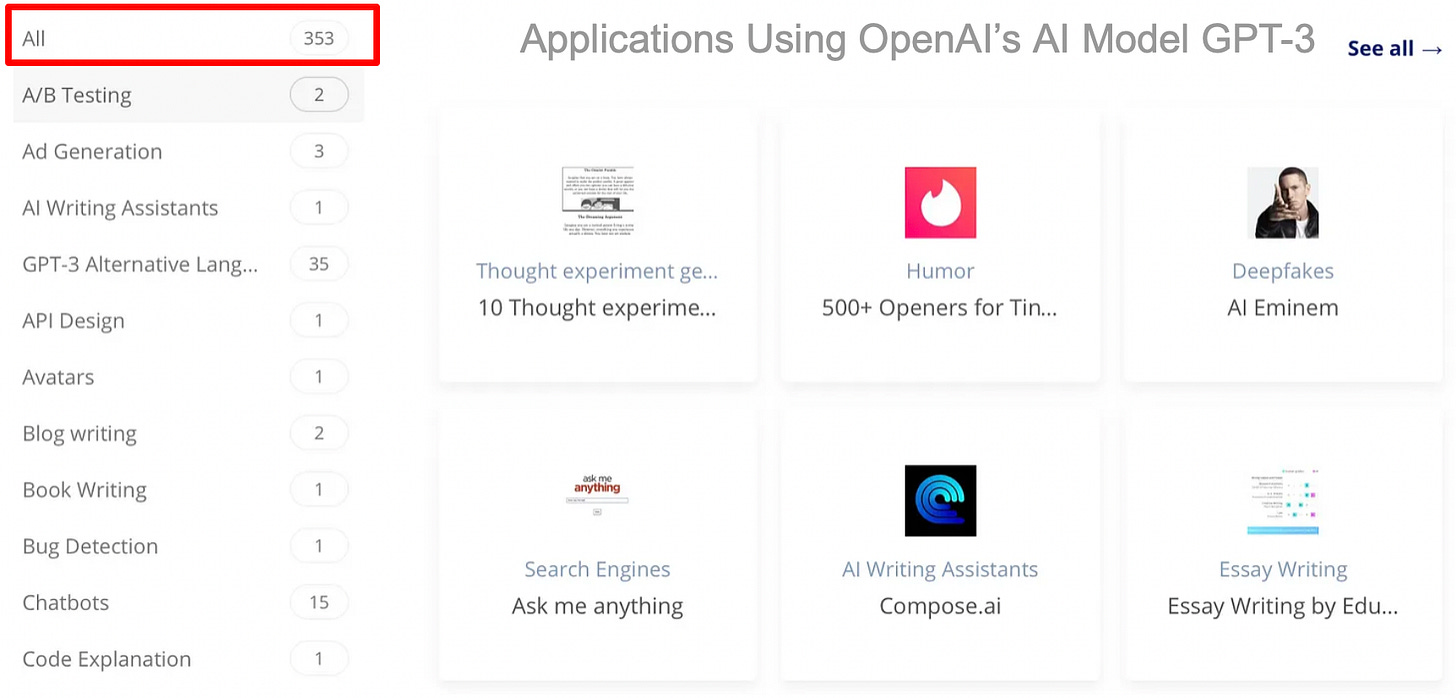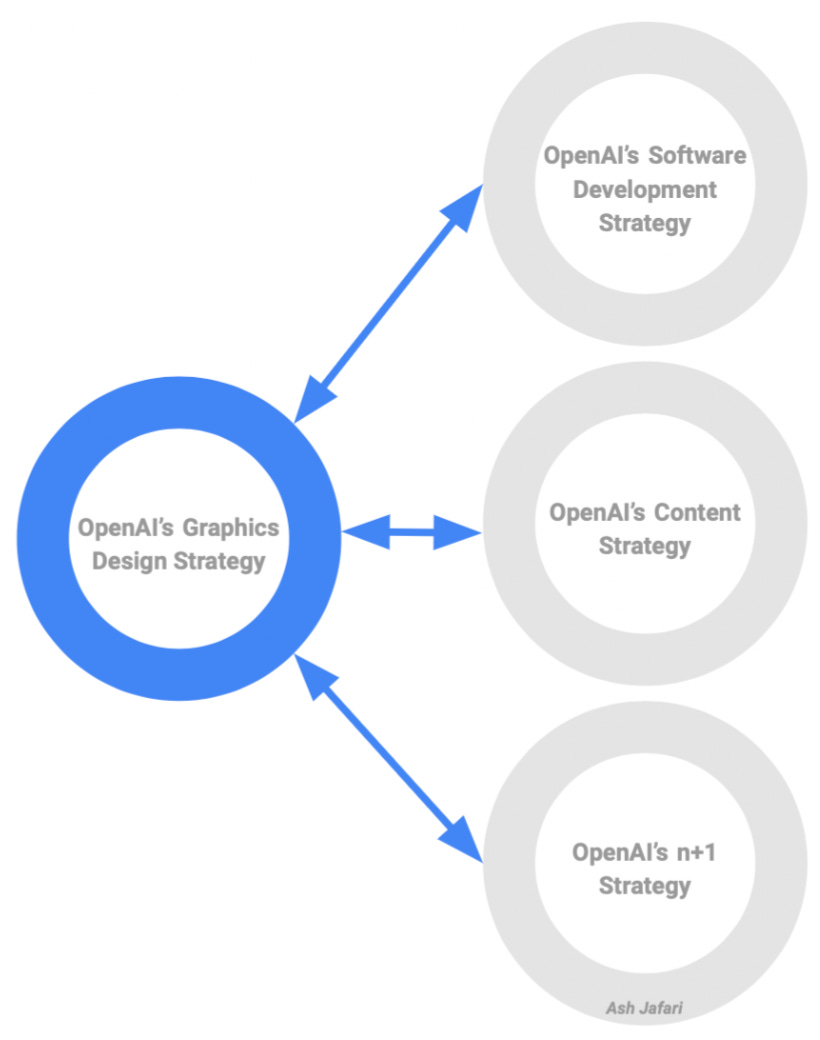Imagine an astronaut riding a horse on the moon. That’s not just some Elon Musk fantasy, the visual is actually a unique piece of art created by DALL·E 2—an image and art AI released by OpenAI a few months ago. By inputting simple text into DALL·E 2, it can produce one-of-a-kind artwork with beautiful images. Input “an astronaut riding a horse in a photorealistic style,” and you’ll get the image below produced in a few seconds.

If the announcement wasn’t mind-blowing enough, I am convinced that this is a part of an $80 trillion dollar AI opportunity that’s not getting enough attention. The bigger implication is that DALL·E 2 is the beginning of the automation of creative jobs. Let’s dive in…
First, let’s establish the obvious. OpenAI is puny David and Google is Goliath. History has taught us time and again that the best (and maybe only) way David can defeat Goliath is by taking a completely unorthodox approach. Working at AI-powerhouse NVIDIA gave me an insider’s perspective on this phenomenon. Against all odds, NVIDIA outmaneuvered and outgrew Intel—a company more than 30 times its size.
OpenAI knew they needed to do something unconventional to establish themselves in the commercial marketplace against Google, so they released DALL·E 2 to the public in April to garner a massive waitlist of potential customers. As of July 13th, their CEO Sam Altman (former President of Y Combinator) tweeted this:

On the surface, this might just appear as a way for OpenAI to flesh out issues and gather more data to enhance their AI model. While all that is true, they are also amassing over 1 million interested businesses, entrepreneurs, technologists, and artists now on their customer waitlist. That is the way to compete against Google’s Workplaces (for enterprise businesses)—which already has millions of customers.
Why is this important?
The sheer market potential is staggering. ARK Invest ran a Twitter survey for graphic designers and determined it would take your average designer about 5+ hours to recreate an image that DALL·E 2 created in just 22 seconds! If you work out all the math, a human designer costs ~$150 to produce an image while the AI designer costs one penny.
You read that correctly: one penny! One useless copper coin! That makes AI labor 99.99% cheaper than human labor. ARK went on to share their thoughts on whether human designers will be replaced by AI with such a wide price gap. They argue that human designers will still be needed to interface between businesses and the technology.
But, how big of a role will human designers have in the future as AI designers take on the lion’s share of the work? Will it take 5 hours for a designer to interface with a client for just one image? I think not. Let’s be extremely generous and say it takes 1 hour of client-tech interface time for a given image. AI just eliminated 4 out of every 5 hours of a designer’s workday. There is no way the entire gap can be filled with a worker simply taking on more assignments. If you multiply out the disruption across hundreds of thousands of designers and artists, then well, you get the picture.
It’s not just graphic design and artwork that will be impacted. AI-assistants will create a suite of services each interconnected—let’s call it the AI-job suite. It’s no coincidence that both Google and OpenAI also have an AI model for software development. OpenAI’s is commercial through Github Copilot, whereas Google’s AlphaCode is even more powerful, but not yet commercially available.
Furthermore, OpenAI’s large language model, GPT-3, already has a slew of startups offering copywriting for commercial purposes. (Disclaimer: This article was not written by an AI-writer. Not yet at least.).
The AI-job suite that is primed to take shape already includes: graphic design, software development, and writing. Soon, it will go beyond creative jobs into a wide range of business-related jobs—e.g. paralegals, customer support, program managers, accountants, marketers, data analysts, etc. There are more than 350 AI startups and applications making waves across these disciplines.

OpenAI understands that AI-jobs will be a huge boon to their business. Even if artificial general intelligence (AGI) is 50 years out instead of 10 as I wrote about previously, this provides them with a meaty cash cow.
Here’s how I predict things will manifest…
OpenAI will start charging businesses for images based on how many images they request. Just like Amazon Web Services charges businesses for usage across storage, computing, etc. Imagine a simple webpage where OpenAI will list out their AI-job suite, including “jobs” such as software developer, graphics designer, customer support rep, and accountant. You can select which service offerings you’d like to purchase ad-hoc or opt into the full AI-job suite.
With just a few clicks your business is now “employing” AI-powered algorithms as opposed to manpower.
As OpenAI’s AI-job suite accumulates more customers and data, it builds ever-increasing momentum to keep the business going and growing. That flywheel effect is a hallmark of disruptions.

Let’s break down how the flywheel effect will work. In this case, it all starts with the free service that attracts the initial set of users.
But, that’s just one “job” the AI-job suite can do. OpenAI will connect that AI-job with other AI-jobs, such as software development, content writing, and many others. As one AI-enabled task improves over time, other AI-enabled tasks get better too. This positive feedback loop not only improves one AI-job, but cross-pollinates to improve other AI-jobs while also getting better at understanding customer requests and nuances.
This opens up an entirely new market for AI-job services. The AI-job market has all the hallmarks to become a major disruption. A very helpful innovation lens to apply here is the 6 Ds of disruption—a framework pioneered by futurist Peter Diamandis that describes how technology is upending industries while leaving gaping opportunities for entrepreneurs to capitalize on.
The 6 Ds are (1) digitization, (2) deception, (3) disruption, (4) demonetization, (5) dematerialization, and (6) democratization.
DALL·E 2 is digitized. I mean how else would you randomly create teddy bears mixing sparkling chemicals like mad scientists in a ’90s Saturday morning cartoon?
It is deceptive and demonetized. “Hey world, here is this super fun thing to try out. And it’s free!”
It is dematerialized as no special physical hardware is needed to produce it on the user’s end.
Lastly, since it is digitized everyone can access the service and that democratizes it.
OpenAI and Google are on the cusp of unlocking parts of a $80 trillion market opportunity. Such a market is a winner-takes-most opportunity due to the flywheel effect and the lack of incumbents.
Who will this benefit in this future? In short, OpenAI, Google, and their shareholders will benefit the most. Businesses both large and small will also benefit financially. Instead of hiring 5 designers and 5 content writers, the business might only need 1 of each employee. A large business that needed 50 designers and 50 content writers would only need 10 of each to conduct business as usual.
Who will lose out in this future? Creative professionals who are low or medium-skilled individual contributors. Heck, with far less headcount there will be much less need for design managers, content managers, and other middle management fields. However, highly-skilled individual contributors will likely still be valuable and retained in these pared-down positions.
We, as a society, are not ready for the structural disruption and potential worker displacement this will create. I am also pessimistic that the newly unemployed designers can be re-skilled easily since many other areas will also be upended by the AI-job suite.
Even if you are not a creative professional or a business owner, you will be affected by this major market disruption via your 401k or retirement plan—which invests across a fund of S&P500 companies. There will be a shakeup with a few companies taking the lion’s share of revenue and profits. (Reminder: A winner-takes-most market will likely prevail due to the flywheel effect.).
See the top 5 companies from 2010 to 2020 (pictured below). Only 2/5 of the largest companies were technology companies in 2010. Fast forward to 2020 where 5/5 were technology companies with market caps bigger than ever before. In the span of just 10 years, companies that followed the 6 Ds of disruptions dominated the economy.
AI-job suites will upend the current company hierarchy—which is dominated by tech companies using machine learning to improve search results, newsfeeds, shopping recommendations, etc. I predict the rest of the 2020s will see the meteoric rise of AI-job suites. This new paradigm is drastically larger than the previous one because it replaces human labor with AI labor. Before, we used machine learning for very narrow applications. In the future, the sky’s the limit—representing an even bigger market potential.
I firmly believe this AI-job suite is not being given enough attention considering the trillions of dollars at stake and the major disruption to jobs, the economy, and work/life as a whole. That’s why I will be continuing my deep dives and analysis into AI-job suites in future posts.
I’ll expand on the 3 AI paradigms and how to value the market opportunities, the types of jobs that will succumb to the next waves of the AI-job suite, and much more. If you enjoyed reading this post, please subscribe below.
My goal is to help you become more aware of how AI could impact your job or business, your investments, and your life. See you in the future!
If you enjoyed reading this post, share it with 5 of your friends and see what they think.
💁🏻♂️ Disclaimer: All content on this Substack is for discussion and illustrative purposes only and should not be construed as professional financial advice or recommendation to buy or sell any securities. Should you need such advice, consult a licensed financial or tax advisor. All views expressed are personal opinion as of date of publication and are subject to change without responsibility to update views. No guarantee is given regarding the accuracy of information on this Substack. Neither author or guests can be held responsible for any direct or incidental loss incurred by applying any of the information offered.








Yes, but if a customer is not *quite* satisfied with an AI generated result, how well can the AI be instructed to make changes? If you give it slightly modified instructions the entire generated image may be drastically changed. To follow iterative, incremental instructions we would need generalized AI